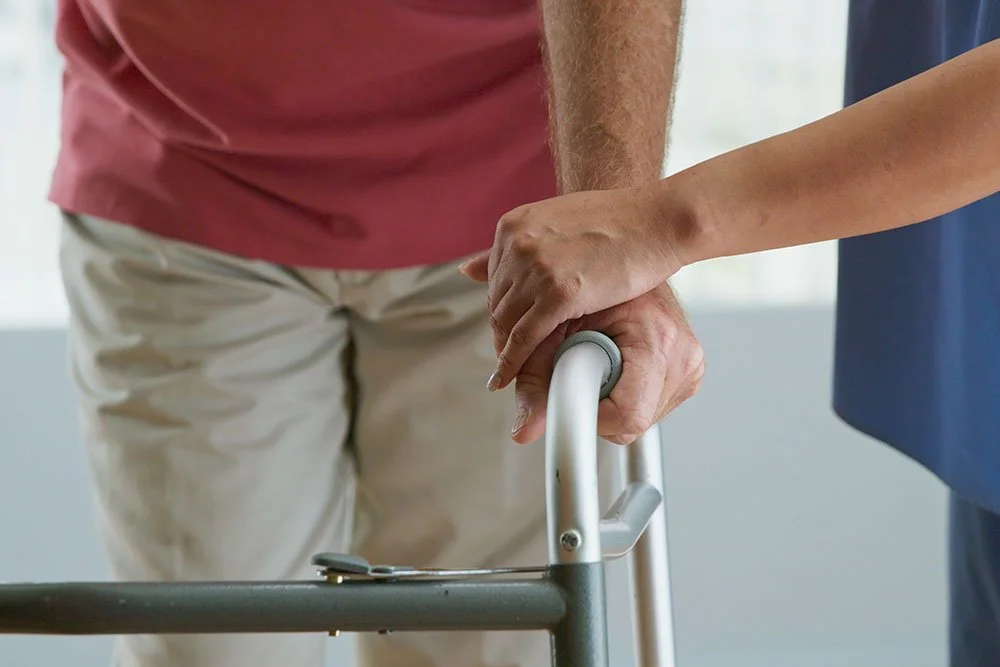Managing Pain and Discomfort: Pain Relief Strategies After Total Hip Surgery
Undergoing a hip total joint surgery, commonly known as hip replacement, is a transformative journey towards restoring mobility and improving quality of life. While the benefits of this procedure are significant, it's essential to acknowledge that pain after hip replacement is a natural part of the recovery process. Total hip replacement surgeon, Dr. Nathan Cafferky discusses effective pain relief strategies to help patients navigate through hip replacement pain and discomfort, especially during weight-bearing activities.
Understanding Pain After Hip Replacement
Hip replacement surgery involves replacing the damaged joint with an artificial implant, designed to replicate the natural joint's function. As the body heals and adjusts to the new implant, some degree of hip replacement pain is to be expected. This pain can manifest during various phases of recovery, especially when patients engage in weight-bearing activities. The body's response to this surgical intervention is complex, involving inflammation, tissue healing, and muscle adaptation. As a result, hip replacement pain during weight-bearing can arise from the pressure on the surgical site and surrounding tissues.
Effective Pain Relief Strategies After Hip Replacement Surgery
Medication Management: Pain management often starts with medications prescribed by your orthopedic surgeon. Non-prescription pain relievers, such as acetaminophen and non-steroidal anti-inflammatory drugs (NSAIDs), can help reduce inflammation and discomfort. However, it's crucial to follow your doctor's recommendations and not exceed the recommended dosage.
Physical Therapy: Working with a skilled physical therapist is instrumental in managing pain after hip replacement. They will guide you through exercises that promote muscle strength, flexibility, and overall joint stability. These exercises are tailored to your condition and recovery stage, helping you regain strength without exacerbating hip replacement pain.
RICE Method: Rest, Ice, Compression, Elevation: Employing the RICE method can alleviate discomfort after weight-bearing activities. Rest gives your body time to recover, while applying ice can reduce inflammation. Compression with an elastic bandage and elevation help control swelling and minimize hip replacement pain.
Assistive Devices: During the initial stages of recovery, using assistive devices like crutches or a walker can significantly reduce weight-bearing pain after hip replacement. These tools help distribute weight away from the surgical site, allowing it to heal more comfortably.
Healthy Lifestyle Choices: Your overall health plays a pivotal role in your recovery. Maintaining a healthy body weight reduces strain on your new joint. Proper nutrition supports healing, and staying hydrated ensures your body can repair tissues effectively.
Getting Back After Total Hip Replacement Surgery
Enduring hip replacement pain during weight-bearing activities is a temporary challenge on the path to restored mobility and improved quality of life. By partnering closely with your total hip replacement doctor and following a comprehensive pain management plan, you can effectively navigate this phase of recovery. Remember that each individual's experience is unique, so it's essential to communicate openly with your healthcare team about your pain levels and concerns.
As you progress through your recovery journey, focus on achieving small milestones and celebrate your successes along the way. With dedication to your physical therapy routine, proper medication management, and a commitment to a healthy lifestyle, you'll find yourself gradually stepping into a future marked by increased mobility and reduced hip replacement pain. Contact Dr. Nathan Cafferky today to learn more.



